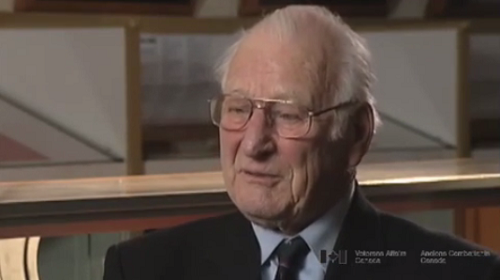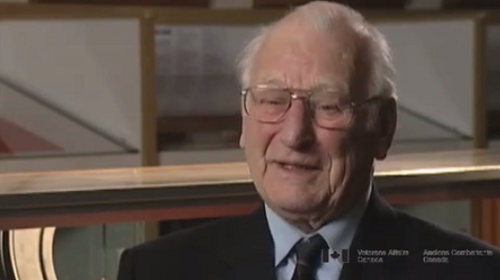Combat Roles in North Africa
Heroes Remember
Combat Roles in North Africa
Transcript
Description
Mr. Wilson itemizes the Royal Air Force's role at El Alamein, namely neutralizing German Stuka dive bombers, supporting the infantry, and strafing German troops and road traffic.
Gordon Wilson
Gordon Wilson was born on December 5, 1917 in Limerick, Saskatchewan. The Royal Canadian Air Force was no longer accepting recruits when he enlisted so he joined the Royal Regina Rifles. Six months later, Mr. Wilson joined the Royal Canadian Air Force at Brandon, Manitoba. His first wartime deployment saw him serving in North Africa near El Alamein, where he initially flew Hurricanes in a Royal Air Force squadron. He later piloted Spitfire 9’s in Sicily, Italy and the Middle East. After the war, Mr. Wilson completed a university degree and became a museum curator.
Meta Data
- Medium:
- Video
- Owner:
- Veterans Affairs Canada
- Duration:
- 3:33
- Person Interviewed:
- Gordon Wilson
- War, Conflict or Mission:
- Second World War
- Battle/Campaign:
- El Alamein
- Branch:
- Air Force
- Rank:
- Flying Officer
- Occupation:
- Pilot
Related Videos
- Date modified:















